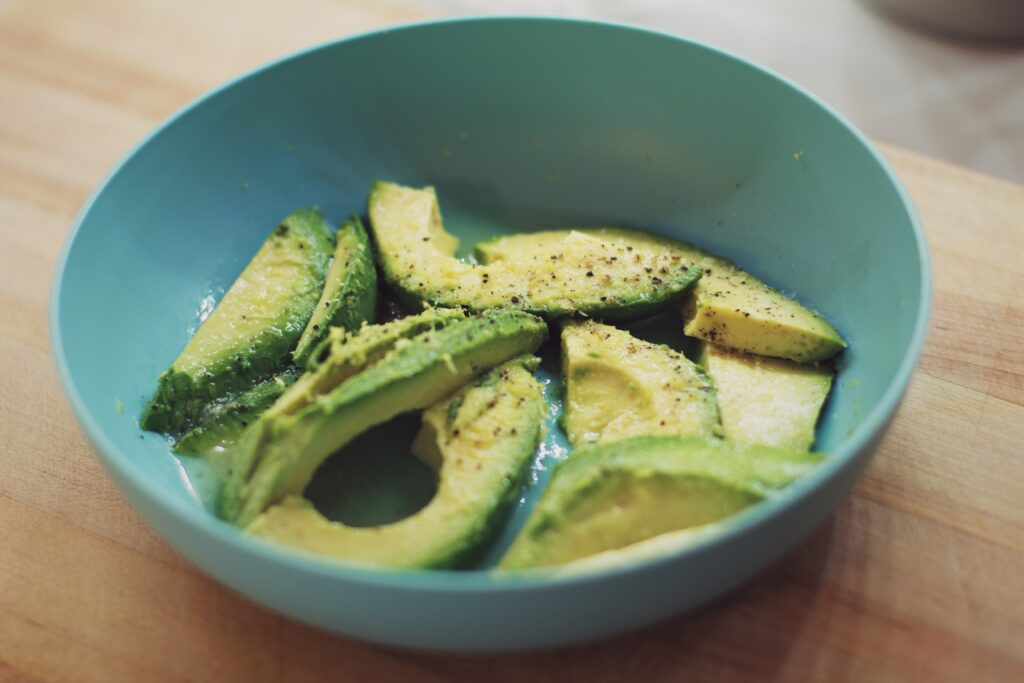Getting close to introducing solid foods? If so, you may be wondering, which method is best? Spoiler alert: There is no ‘right’ method. Each baby’s journey with solids is as unique as they are. In all reality, the right method is one that feels like the best fit for you, your baby, and your family. We all have different beliefs, cultures, and dietary preferences. All of these things impact how food is prepared and offered in our homes. With this in mind, it’s important to follow your maternal (or paternal instincts). These instincts—after all—can be your ultimate guide. All of that said, to spoon-feed purees or attempt baby-led weaning? To begin, let’s dive into the differences between the two.

What is baby-led weaning?
Baby-led weaning (BLW) is a method of starting solids that involves offering baby finger foods from the family table. It’s an act of self-feeding. It’s not about “weaning” per se, but rather an approach that centers around letting the baby lead. Technically, BLW skips over the passive spoon-feeding of purees. But contrary to popular belief, it does not mean avoiding purees altogether. A combined approach—one that includes both finger foods for self-feeding and the spoon-feeding of puree—is fine when babies are fed responsively. There is no evidence that a combined approach is detrimental.
What are the benefits of baby-led weaning?
The benefits of baby-led weaning are vast:
- It gives little ones a chance to familiarize themselves with various textures, colors, and flavors of different foods. This could, in turn, encourage your baby to be a more adventurous eater.
- It helps improve manual dexterity. Finger foods help babies develop their hand-eye coordination. It’s also much safer when a baby is in full control of (appropriately-sized) foods that go in and out of their mouths.
- Mealtimes become less complicated. There’s no need for convincing tricks. With the BLW method, babies can choose what and how much to eat, given what is on their plate or tray. Some days, they’ll eat more. Some days, less. They’re intuitive beings! Our job, as parents, is to offer healthy choices at regular intervals. Ultimately, trust that your baby knows how much they need or want to eat.
- Speaking of, BLW increases trust. It allows little ones to see that different foods have unique shapes and textures. Pureed food, on the other hand, has different flavors but a very similar texture. Imagine if someone was hand-feeding you grapes and then suddenly slipped an olive in your mouth without warning. Even if you like olives, you might be a little weary of the person feeding you after that.
What are the drawbacks of baby-led weaning?
There are a few potential downsides to baby-led weaning. Consider the following:
- First, studies have shown that it can lead to babies with low iron levels. In essence, this is because parents are more likely to blend iron-rich meat into purees, but not offer meat as a finger food. But, it’s not complicated to offer meat to babies! Again, more on this in an upcoming post. Keep in mind that while baby cereal is often offered for its iron content, the bioavailability of iron from baby cereal is extremely load, whereas the bioavailability from foods like animal protein, peas, tofu, and broccoli are much higher.
- Second, it is possible that when sharing family meals, babies run the risk of consuming higher than advised levels of refined salt and sugar. These are two ingredients to be mindful of. With salt, for example, simply salt the adult portions once baby’s portion has been set aside.
- Third, BLW can be quite messy. My suggestion is to embrace the mess. Giving children permission to get messy at mealtimes can actually increase the likelihood that they’ll eat what is offered. If messy mealtimes makes you very anxious, BLW may not be the best route.
- Fourth, one of the most common reasons parents don’t attempt BLW is concerns around choking. However, there isn’t enough sufficient evidence to prove that BLW actually causes more babies to choke. When done with safe foods that have been properly prepared, babies learn how to swallow properly.
- Last but not least, there is a lack of support from health care practitioners when it comes to BLW. Purees are what most pediatricians recommend. There is an increasing need to educate health care practitioners on the benefits of BLW.

Baby-Led Weaning, Purees, or A combo?
As a Certified Nutrition Consultant for babies, I recommend baby-led weaning. However, there are various reasons why starting with purees may feel like a better fit for some babies. Purees can still be a great way to introduce nutritionally rich foods to babies. Regardless of what intentions you set out with, remaining flexible in your approach is key. Keep in mind that you can also take a mixed approach, offering both purees and finger foods. You aren’t required to choose one method exclusively, but instead you can adopt any combination that suits the needs of your family and baby.
Baby-Led Weaning Might be Right if…
- You already eat healthy meals that could also be baby-friendly.
- Trust that your baby is able to self-regulate and choose the right amount of food for themselves.
- Know that gagging is safe and normal and you can stay calm if baby’s gag reflex is triggered.
- Feel properly educated about the safest size, shape and texture of finger foods. If not, let’s work together! I provide nutrition consulting as a CNC for babies.
Purees might be right if…
- You don’t mind preparing special meals just for your baby.
- Are confidently able to read and respond to your baby’s signs of fullness.
- Won’t be tempted to try and convince baby to eat more than they are naturally inclined to.
- Feel quite anxious about gagging and aren’t able to stay calm while baby self-feeds.
- Don’t feel properly educated about safe finger food.
Need help choosing a method? Contact me. I’d love to work with you!

Images courtesy of Unsplash.



Leave a Reply